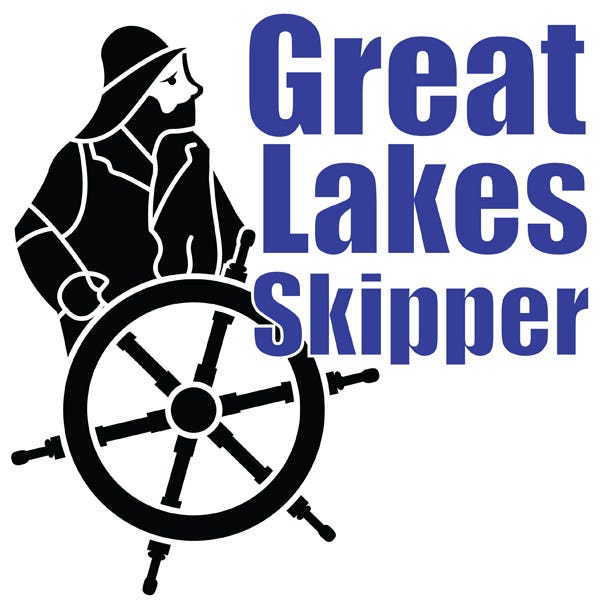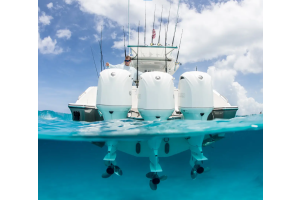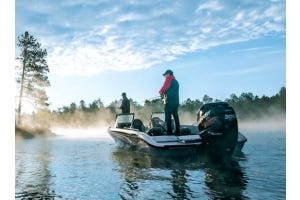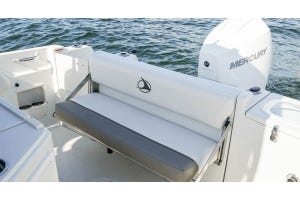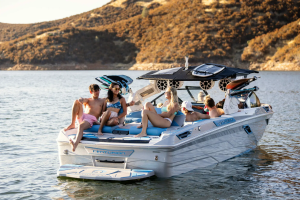
With the right boat and a wake surfboard, the surf’s up whenever you want! No one knows for sure who was the first brave soul to try surfing a boat's wake, but the sport has come a long way since the 1960s, with specially-designed boats and boards.
Professional wake surfers like four-time world champion Ashley Kidd dazzle us with daring tricks.
The same type of boat used for regular wakeboarding (with a tow rope) is best for wake surfing. Wake boats have inboard engines, with the prop safely beneath the boat. As you can see, wake surfing requires the rider to be close to the boat, so never try this sport with an outboard engine or a stern drive.
 Photo: Cobalt Boats
Photo: Cobalt BoatsPurpose-built wake boats also have ballast placed in the hull by the manufacturer, and this extra weight helps generate a strong, exciting wake. Some systems pump water into tanks or bags to add weight; this water can then be pumped out when the boaters are ready to head home. Ballast systems can be added to other boats, too, provided the weight is not too much for the hull. Some wakeboard enthusiasts improvise with cinder blocks placed strategically (and securely) around the boat, with most of the weight to the stern and to one side. Instructions for doing this are beyond the scope of this article, so check with your local surf shop or wake boat dealership for advice. You will also need a different propeller, because the extra weight causes the boat to travel through the water differently.
Wake surfboards come in different sizes. The smaller boards are best for experienced surfers because they are light and maneuverable. A larger, heavier board is easier for a beginner to control; its larger surface area causes it to move more slowly, and it floats better. Again, for expert advice on choosing the best board for you, consult a surf shop.
 Photo: Jarvis Boards
Photo: Jarvis Boards
If you know how to wakeboard, you're on your way to learning to surf. Both sports start out with the surfer holding a tow rope that's connected to the boat (via a wakeboard top, pylon, or other securely-mounted ski tow). For wake surfing, a shorter, thicker rope is used, and it sometimes has a smaller handle. Once the boat is moving and the surfer is up, the surfer throws the rope back in the boat, or simply drops it. Speeds of 9-10 mph are about average for wake surfing - much lower than wakeboarding speeds.
As when enjoying any watersport, wear a properly-fitted life vest, have a spotter, and don't drink and drive (or surf).
Check out these wake surfing tips from pro surfer Josh Palma, and keep an eye out for more wake surfing articles from the Skipper.
